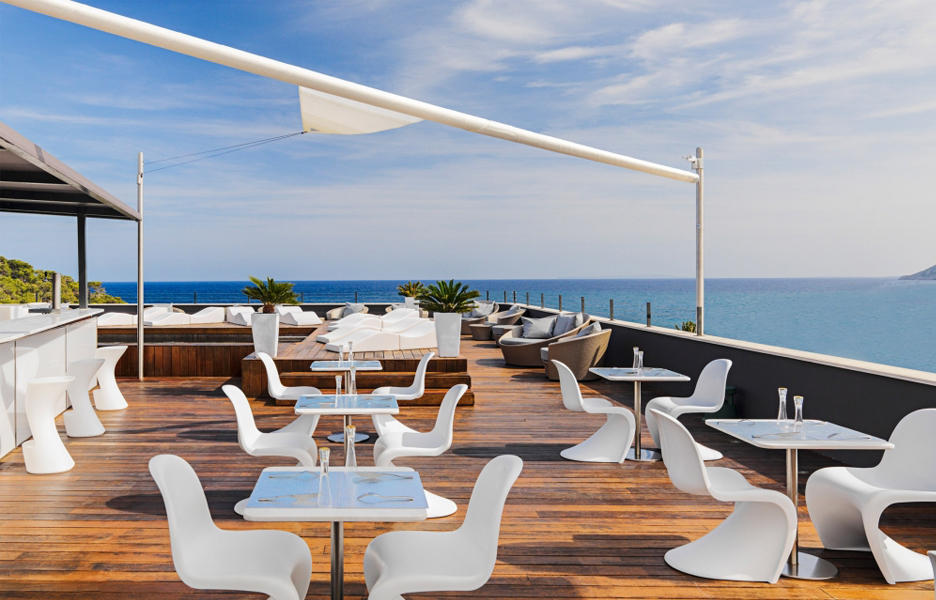
Ancient designs: planning a project ‘day after day onsite’
Ancient designs: planning a project ‘day after day onsite’
Share
When the architects started working on this former hayloft in Mora, Spain they had no idea how it was going to end up looking.
“This has been a project designed day after day onsite, solving problems, creating an intense teamwork together with the client and the builders,” explains architect Joaquín Millán Villamuelas of OOIIO Architecture.
The initial goal was to avoid the collapse of a group of former modest agricultural constructions, which were once used as a hayloft, tool rooms, barn for mules, dog pounds, water well, kitchen for the workers and a cave used as a fridge to keep the food fresh when there was no electricity or home appliances.
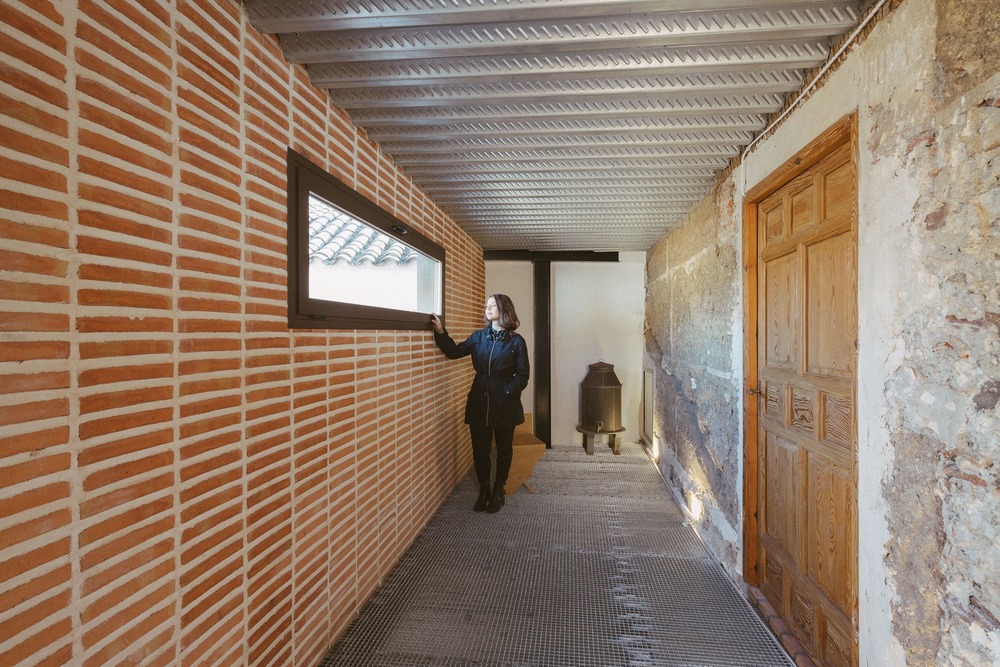
Some areas are hundreds of years old and others date back to beginning of the 20th century, but all of them had in common that they were cheap, functional constructions used as countryside workspaces. After more than 50 years of disuse and no maintenance, the buildings were about to collapse.
The first stage of the work was purely structural reinforcements of roofs and falling adobe (mud) and brick walls. “The architects followed ancient techniques and respected the way those elements were built originally, understanding the way the builders worked those materials their time,” says Villamuelas.
Once safe work conditions were reached, the OOIIO team began to merge all the different—originally divided—spaces to create one large open space.
Next the team turned its attention to the building’s façades. “On the former façades, there was an existing brick wall made from beautiful large ancient bricks,” explains Villamuelas. “It was collapsing due to the roof cover thrusts. We encouraged the client not to demolish it and finally decided to use brick as the only added material for all the new-built walls. Playing with the existing recovered brick wall, they provided a great richness in textures and finishes.”
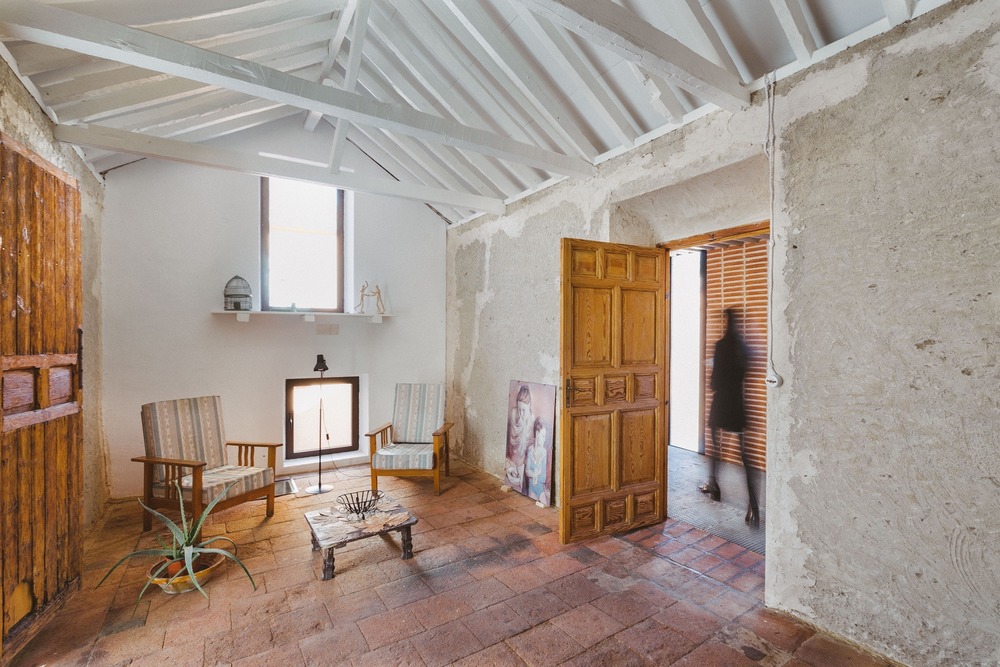
With several brick factories just a few kilometres away from the site and the material’s ability to work well with the local climate, it was a perfect choice for the project.
Although there are three levels—one underground (cave), ground floor and first floor—there were no stairs up to the haystack’s first floor. Workers used to reach the first floor by climbing up the wall.
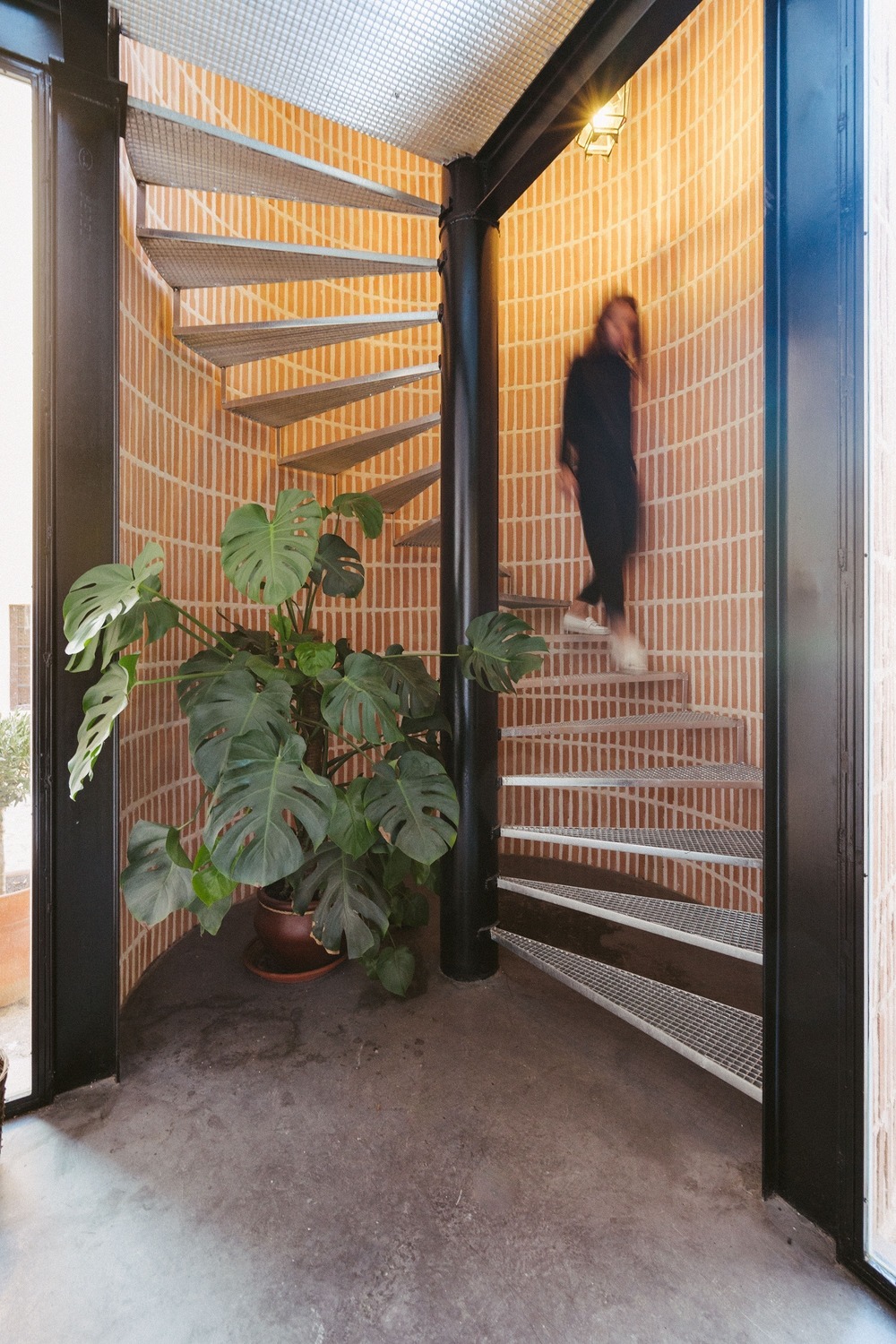
Therefore OOIIO architects decided to add new stairs. Its cylindrical shape, hugging a spiral staircase, is a nod to an agricultural tank made of bricks.
The decision to recover as many ancient architectural elements as possible led to the repair of all the ancient wood doors, historical clay tiles, beams and columns and the stripping back of the walls to show the original materials used.
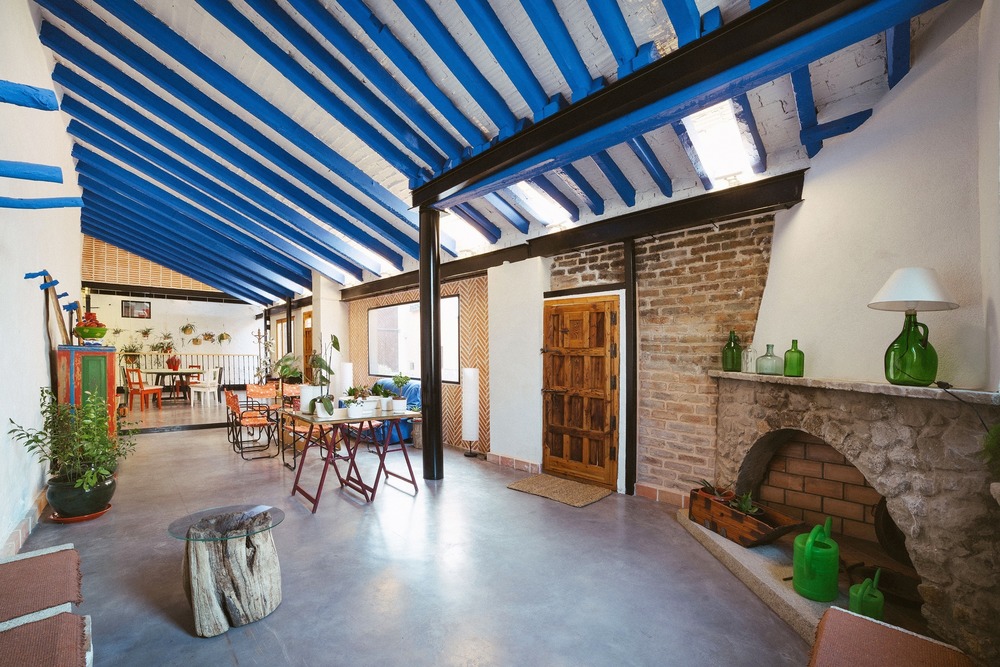
After many years of disuse, painting the walls with white lime paint gave a blow of fresh air to the building. The team also decided to paint the original structural elements in traditional and local indigo blue and the new elements in black. This “chromatic code” shows the way the structure is actually working and became the definitive final touch of personality of the interior.
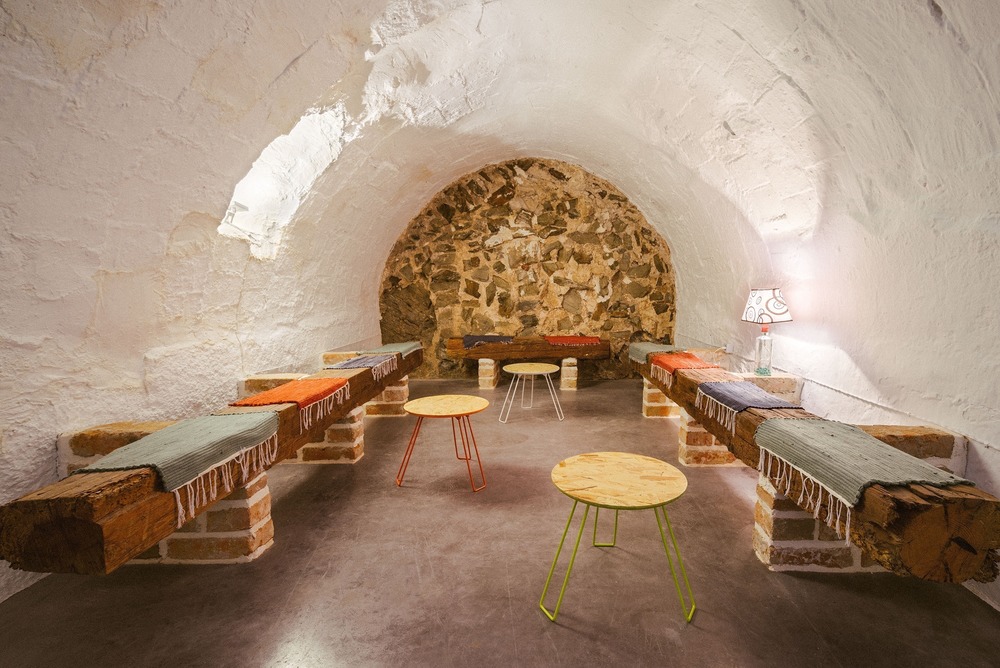
Photography by OOIIO Architecture, josefotoinmo
You Might also Like
